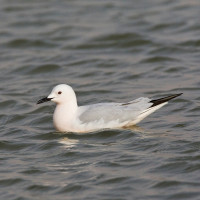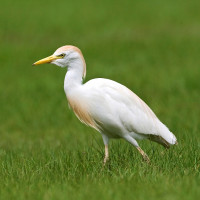Beschreibung
Due to the irrigation, the current Kalamas Delta is pushed further north. Drive by the “tower hill” (check the cow herds for Kuhreiher), cross the Kestrini River and search the northern bank to the left (the southern bank is mostly dried out and converted into citrus orchards).
Eisvogel are hunting (on this bank alone I recorded six of them). Quite a few Rotschenkel, numerous Haubenlerche (by cattle corrals), Braunkehlchen (in reedbeds), Krauskopfpelikan (in the Xeradi Lagoon). In September the roadside bushes are alive with migrating Grauschnäpper and flocks of Fitis.
Details
Zugang
Driving north along the Ionian seacoast through the city of Igoumenitsa, there is a place where the main artery takes you right, further away from the sea – follow it for 150 metres and then turn left just before a small sports stadium. The rest of the road follows the sea.
Zoom in on the map and click on the "P" (parking) sign for driving directions.
Terrain und Habitat
Wald , Feuchtgebiet , Strand , Schlammflächen , Landwirtschaft , Vereinzelte Bäume und Büsche , Fluss , Meer , SchilfflächenBedingungen
Flach , Trocken , Offene Landschaft , StaubigRundweg
NeinIst ein Spektiv nützlich?
JaGute Beobachtungszeit
Winter , FrühjahrBeste Beobachtungszeit
Frühjahrszug , Herbstzug , WinterRoute
asphaltierte Straße , unbefestigte StraßeSchwierigkeitsgrad der Tour
EinfachErreichbarkeit
Auto , zu FußBeobachtungshütten oder -türme
NeinZusätzliche Informationen
To be properly explored, the Kalamas area requires one full day. The nearest resorts are at the island of Corfu (Igoumenitsa is the ferry port for the island) or in the town of Parga, further south.
A detailed description of the area is to be found in the Birdwatching in Northern Greece (2023) by Steve Mills.
Links
- eBird list of the old delta of the Kalamas River
- Only for Dogs and Birders – Kalamas Delta, Greece
- Birding in Greece – Travel Guide to birdwatching sites in Greece (2014, pdf download) by Vlachos, Trigou & Stavrakas


